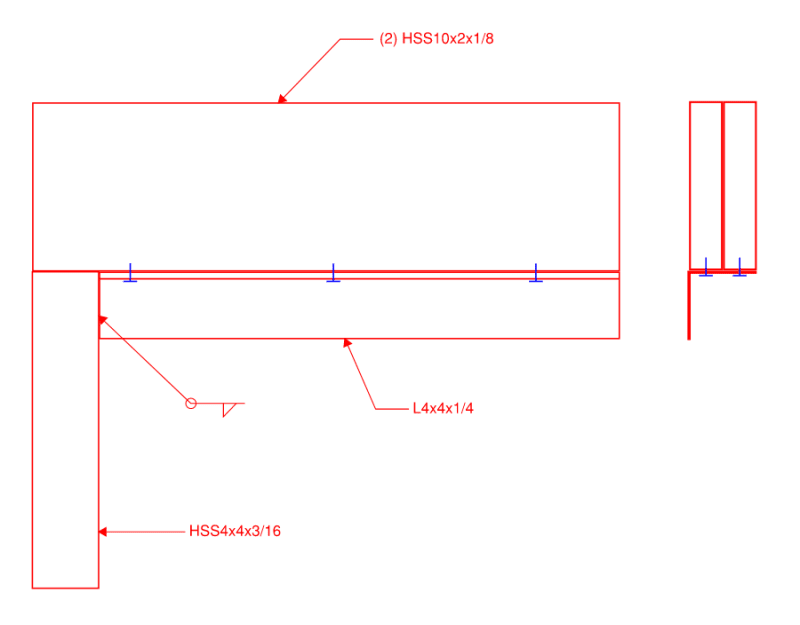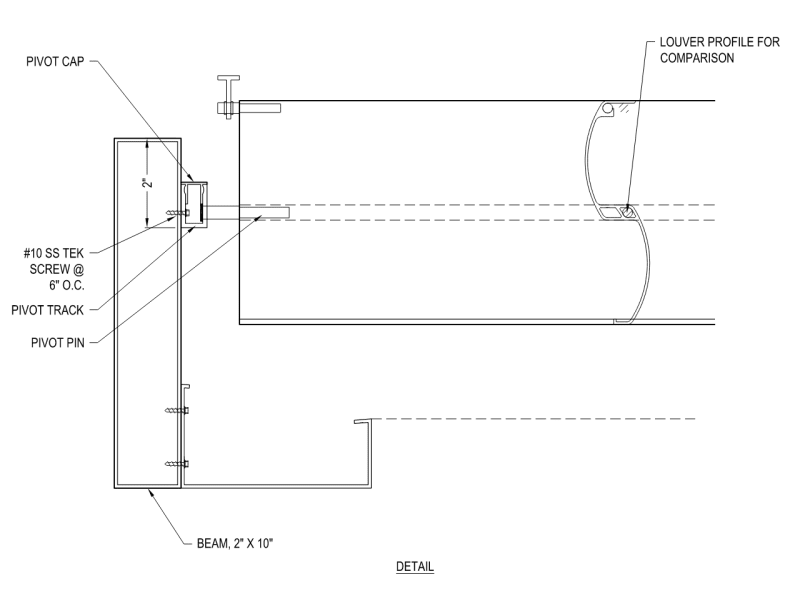David Deck Guy
Structural
- Aug 18, 2023
- 36
I'm having a difficult time wrapping my head around this.
We often have aluminum tubes that connect to steel posts for our pergolas. Given the welding properties (or lack thereof) of aluminum, its been really hard to develop a satisfactory moment connection. One idea recently floated by our construction guy is to run an angle underneath the aluminum tubes and place the moment connection at the post-angle interface.
If I model the tubes as taking the entirety of the moment in RISA, is getting the moment into the posts really as simple as:
-check shear flow between tubes and angle (its low and can easily be taken care of with some tek screws)
-design moment connection between angle and post
I don't need to design a direct moment connection between the tubes and the angle?

My intuition is telling me there is something I am missing. Any confirmation of my (in)sanity on this problem would be greatly appreciated.
We often have aluminum tubes that connect to steel posts for our pergolas. Given the welding properties (or lack thereof) of aluminum, its been really hard to develop a satisfactory moment connection. One idea recently floated by our construction guy is to run an angle underneath the aluminum tubes and place the moment connection at the post-angle interface.
If I model the tubes as taking the entirety of the moment in RISA, is getting the moment into the posts really as simple as:
-check shear flow between tubes and angle (its low and can easily be taken care of with some tek screws)
-design moment connection between angle and post
I don't need to design a direct moment connection between the tubes and the angle?

My intuition is telling me there is something I am missing. Any confirmation of my (in)sanity on this problem would be greatly appreciated.


![[bugeyed] [bugeyed] [bugeyed]](/data/assets/smilies/bugeyed.gif)
